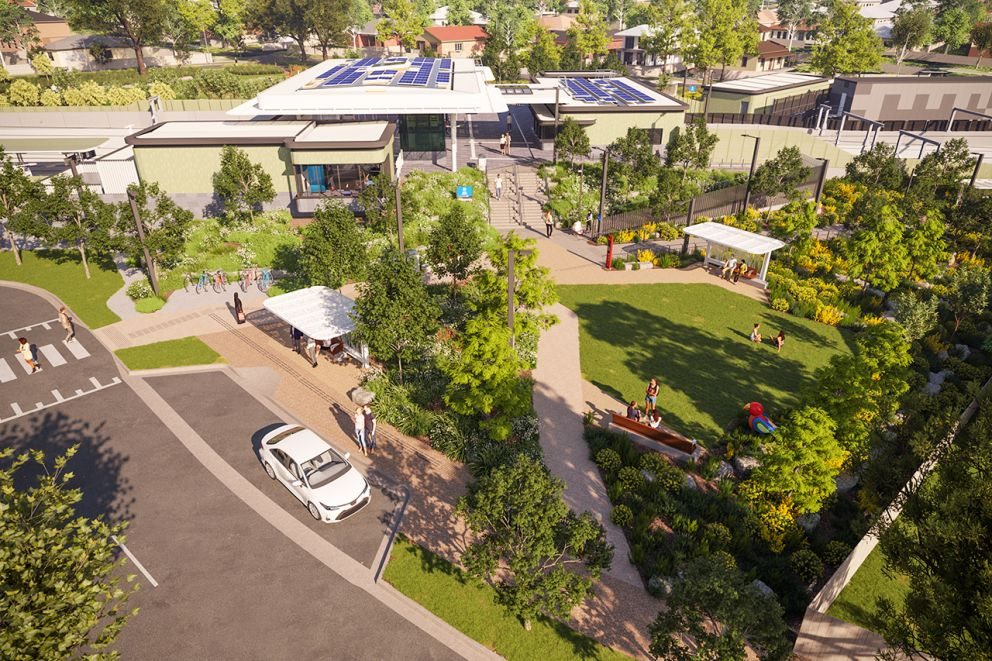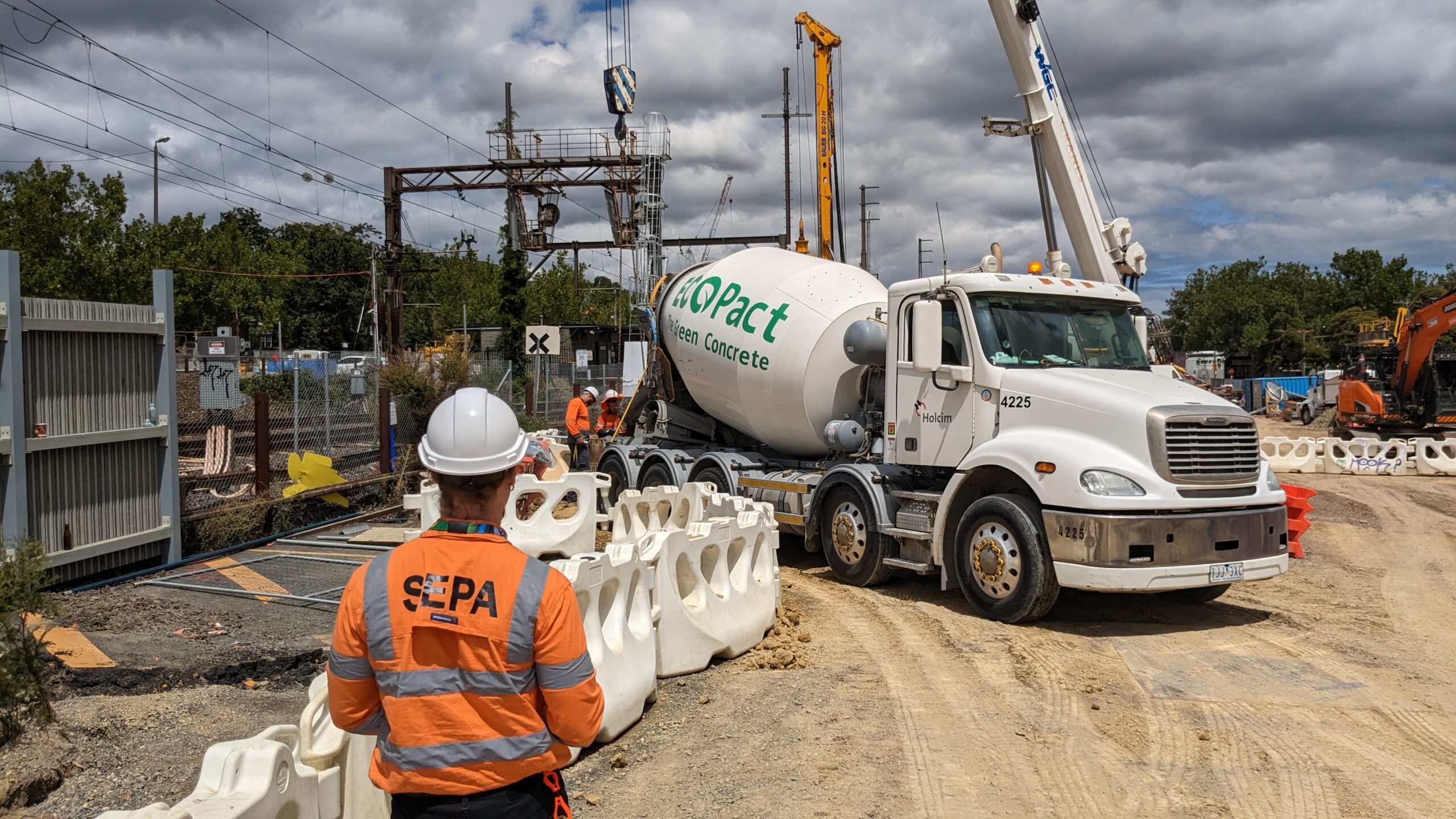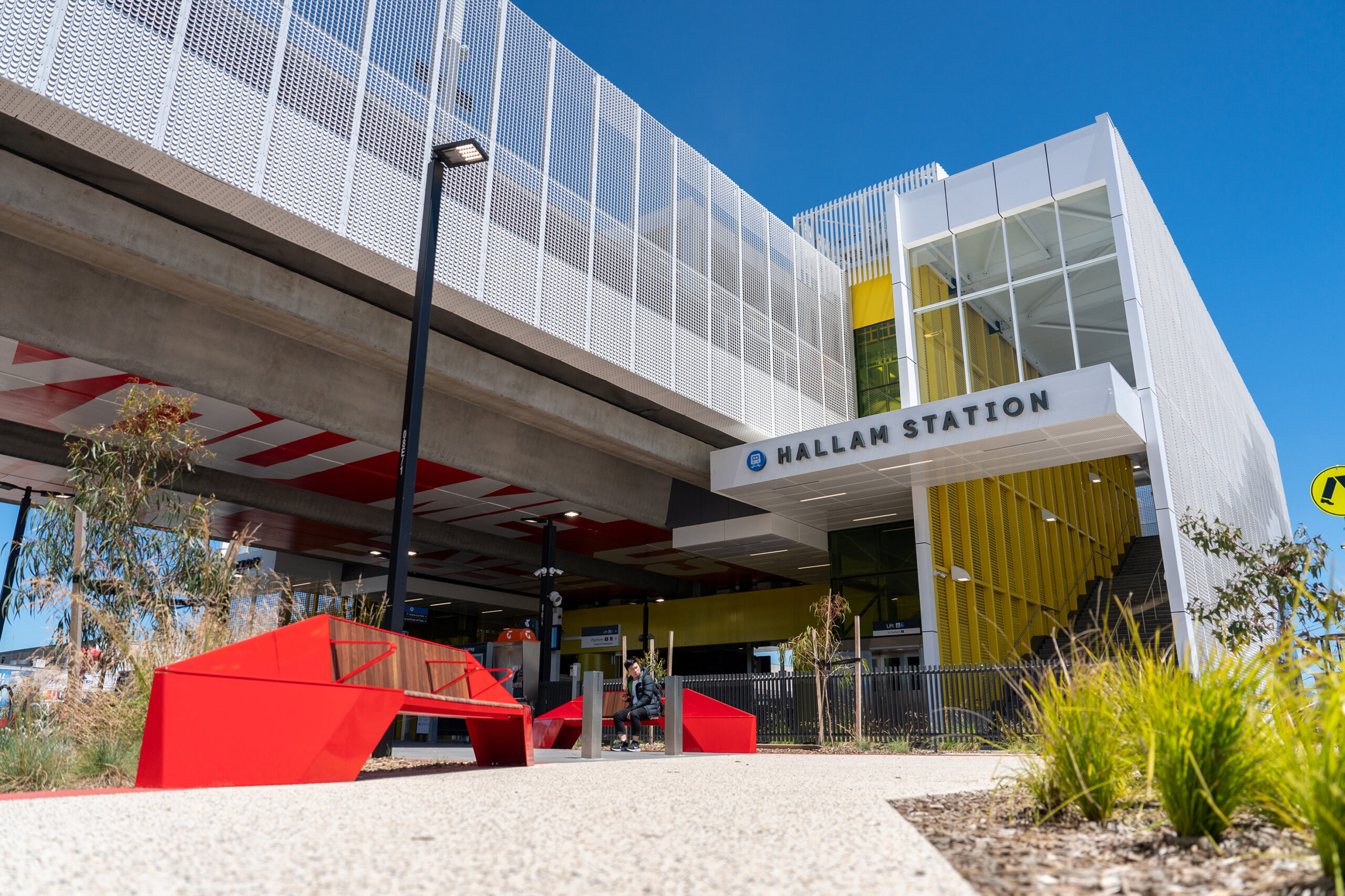Implementing SEPA’s 2022 Sustainability Strategy for Sustainable Construction – Governance Outcomes
Describe WHAT you have done and HOW you have done it.
The South Eastern Program Alliance (SEPA), has been committed to its overarching sustainability strategy and framework since its establishment in 2019. In 2022, we expanded on this strategy by integrating sustainability principles across the whole lifecycle of our projects. To ensure comprehensive coverage, the 2022 Strategy focused on three key initiatives: Net Zero, Circular Economy, and Project Sustain. These initiatives addressed various aspects, ranging from design and procurement to construction and operation.
To implement our sustainability strategy, we employed a strategic and collaborative approach. We worked closely with our parent organisations, aligning with their sustainability policies and objectives. Additionally, we collaborated with industry partners to achieve exemplary outcomes for the industry as a whole.
Internally, we fostered a sustainable culture within SEPA through the "Zero Carbon Culture" initiative. This involved regular updates and knowledge-sharing sessions with the entire SEPA team. The initiative’s objective is to raise awareness and strengthen capabilities among the team, ensuring that sustainability considerations were ingrained throughout our operations and our people are empowered to embrace this culture. By engaging our people early in the design phase, we maximised our ability to influence and incorporate Net Zero principles into our projects.
Externally, we developed enablers to support our sustainability goals. We embedded preferred carbon options into our contracts and collaborated with supply chain partners to establish net zero protocols. This ensured that sustainability considerations were woven into our construction projects and promoted the adoption of sustainable practices throughout the industry.
We embraced the principles of the circular economy, aiming to reduce waste by reusing resources and extending their lifespan. We successfully reused crushed rock and reduced non-destructive digging waste across our alliance. Furthermore, we utilised products containing recycled plastics, such as e-mesh concrete, reconnophalt, and polyrock, to minimise waste.
Under our “Project Sustain” pillar, we engaged Vinsi Partners, Sustainability specialists in the field, to provide expert advice on the maximum allowable supplementary cementitious material content for each application at SEPA. Their advice covered the carbon and durability benefits, and management methods to mitigate potential drawbacks. This valuable advice was documented in SEPA’s first durability Tender Advice Notice.
Furthermore, we facilitated knowledge sharing sessions with Vinsi Partners, and SEPA’s design and delivery teams during our annual sustainability month. This provided an opportunity to explain the "why" and "how" behind our sustainability initiatives and foster an open exchange of ideas.
To address the challenges associated with supplying high supplementary cementitious material concrete to SEPA projects, we engaged concrete suppliers before project award. These proactive discussions led to increased budgets for low-carbon concrete, and we even secured a commitment from a supplier to upgrade their plant silos to supply triple blend concrete mixes to SEPA.
Moreover, SEPA leveraged its position to coordinate with the Department of Transport and Planning and Metro Trains Melbourne to obtain their approval for the use of concrete that exceeded the supplementary cementitious material limits, provided it met other testing requirements.
What were the OUTCOMES and how were those outcomes shared?
Our commitment to achieving Net Zero construction by 2025 has been a driving force behind our pursuit of innovations in the low-carbon construction space. We have implemented various measures, including the use of electric trucks on the Union Road and Mont Albert Road level crossing removal project and hybrid generators on the Cranbourne line upgrade.
On the Hallam level crossing removal project, we reduced emissions by 43 per cent over the lifecycle of the Project as compared to the Base Case for the Project. The operational savings were realised through a 55.5 per cent reduction due to solar photovoltaic panel use and efficient thermal envelope and efficient lighting. We saved 99.6 per cent of our Scope 2 emissions in the construction phase from use of a GreenPower plan combined with a grid connection and semi-permanent grid-connected construction lighting in place of diesel generated light towers.
Additionally, solar-powered site offices and cribs have been established on a number of our projects. These initiatives have significantly reduced our carbon footprint and exemplify our dedication to achieving Net Zero goals.
To ensure consistent implementation of sustainable practices, we now have a decarbonisation checklist in place for projects. This checklist serves as a comprehensive guide, enabling our teams to identify and incorporate low-carbon solutions into their construction processes. We also collaborated with Select Plant Hire to develop a building specification checklist for temporary cribs and offices, further promoting sustainable practices across our projects.
Recognising the importance of carbon offsets in achieving Net Zero, we priced carbon offsets into a number of our projects in delivery, ensuring that net zero construction can be achieved.
Our accomplishments in achieving Net Zero outcomes, particularly on the Hallam level crossing removal project, were shared through an article on the Infrastructure Sustainability Council website. This platform allowed us to showcase our sustainable practices and inspire others in the industry. Additionally, we disseminated information about our achievements through the Sustainability Joint Coordination Committee, which includes all other Level Crossing Removal Project alliances. This collaborative platform enabled us to share our experiences, lessons learned, and best practices with industry partners, fostering knowledge exchange and promoting sustainable construction across the board.
Under Project Sustain, we collaborated with Keller and Holcim and the result was realised through the development of a ground-breaking piling mix with 70 percent supplementary cementitious material content which is 55 per cent higher than the Level Crossing Removal Project's business-as-usual mix. This resulted in a significant reduction in embodied carbon. This low-carbon piling mix was successfully approved by the Department of Transport and Planning and implemented on the Union Road and Mont Albert Road level crossing removal project, and we plan to use this mix in all future South Eastern Program Alliance projects.
Considering the significant amount of piling in our projects, we are looking to the next three upcoming South Eastern Program Alliance projects where approximately half of all concrete used will be attributed to piling. By using the low carbon-mix on these upcoming projects, we’ll prevent around 4000 tonnes of CO2 from entering the atmosphere. While there may be program constraints related to slower strength development, we have collaborated with delivery engineers to program the piling to meet our low-carbon commitment. This approach ensures that more than 90 per cent of piling mixes can utilise the low-carbon mix, maximising its impact.
To share the outcomes of the Project Sustain initiative, the South Eastern Program Alliance representatives presented our low-carbon concrete solution within Laing O'Rourke, which led to an article in Create Magazine. The team also presented at the Level Crossing Removal Project Sustainability Joint Coordination Committee, comprising all five alliances. Outside of this, representatives also presented to the Materials and Embodied Carbon Leaders' Alliance. These platforms provided a valuable forum for sharing our innovative approach and discussing its potential for broader implementation. Through our engagement with these networks, we are actively monitoring the adoption of low-carbon concrete solutions not only in Victoria but also throughout Australia. By monitoring, measuring, reporting, and re-baselining our progress, we strive for continuous improvement and further advancement in sustainable construction practices.
Describe WHO benefited from your initiative, innovation, or approach?
Our commitment to sustainability goes beyond achieving environmental goals; it encompasses empowering our team, fostering collaboration with supply chain partners, and sharing knowledge within the industry. Through our approach, a wide range of stakeholders have benefited, contributing to the overall advancement of sustainable practices.
The core of our initiative lies in educating and empowering our wider South Eastern Program Alliance team. By implementing our sustainability strategy and in creating a platform for it to take on its own life across the Alliance, we ensured that every member of our team was well-versed in the principles and practices of sustainable construction. Touch points were established throughout the year to foster communication, provide updates on progress, and allow for knowledge sharing. This approach not only elevated the level of awareness and understanding within our team but also enabled them to actively contribute to the sustainable outcomes of our projects. The team's education and empowerment have been instrumental in driving sustainable practices forward and instilling a culture of sustainability within the South Eastern Program Alliance.
We recognise the importance of collaboration with our supply chain partners in achieving sustainable construction goals. Through early engagement processes, we have forged strong relationships and worked together to develop the best solutions. Our approach has allowed us to identify and integrate sustainable practices into our projects from the earliest stages, optimising environmental outcomes. By involving supply chain partners in our sustainability initiatives, we have not only improved the overall sustainability performance of our projects but also fostered a sense of shared responsibility and commitment to sustainable practices throughout the supply chain.
Our commitment to sharing information and promoting sustainable practices extends beyond the South Eastern Program Alliance. Across the broader Level Crossing Removal Program we have actively shared knowledge and progress related to piling mixes and other sustainable construction initiatives, ultimately contributing to the collective advancement of sustainable practices.
By sharing our sustainability innovations through the Infrastructure Sustainability Council we have achieved “Leading” As Built ratings of 76 for the Hallam level crossing removal project, 90 for the Cranbourne line upgrade and a Design rating of 93 for the Union Road and Mont Albert Road level crossing removal project.
What LEGACY and UN SDG CONTRIBUTION was achieved?
The true legacy of our sustainable construction strategy lies in the upskilling and empowerment of our team members, suppliers, and external stakeholders. By implementing our sustainability strategy, we have created a culture of exemplar sustainable practice across the South Eastern Program Alliance, ensuring that every individual is equipped with the knowledge and tools to make informed decisions that contribute to our sustainability goals. This legacy will continue to drive sustainable practices and initiatives, not only within the South Eastern Program Alliance but also throughout the broader industry.
The South Eastern Program Alliance's sustainable construction strategy has made significant contributions to several UN SDGs, demonstrating our commitment to sustainability.
• Good Health and Wellbeing: Implementing Net Zero construction practices has allowed us to reduce reliance on diesel, resulting in cleaner air and improved health for our workforce and the communities in which we operate. By prioritising sustainable solutions, we contribute to creating healthier environments for all stakeholders involved in our projects.
• Affordable and Clean Energy: As leaders in the Net Zero construction space, we prioritise renewable construction solutions. By embracing clean energy technologies and practices, we not only reduce our carbon footprint but also promote their adoption, leading to economies of scale and making clean energy more affordable for the industry as a whole.
• Industry, Innovation, and Infrastructure: the South Eastern Program Alliance's sustainability strategy provides robust governance and implementation plans that encourage innovative approaches to sustainable construction throughout the project lifecycle. By fostering collaboration and innovation, we contribute to advancing industry practices and driving positive change within the construction industry.
• Sustainable Cities and Communities: All Level Crossing Removal Projects aim to provide sustainable solutions for the communities they serve. By developing and implementing a sustainability strategy within our long-term program of works, we ensure the adoption of strategies such as Net Zero construction and low-carbon concrete as business-as-usual practices. This commitment contributes to the creation of sustainable cities and communities.
• Climate Action: Our sustainability strategy provides a concise framework for reducing scope 1, 2, and 3 emissions, directly addressing the urgent need for climate action. By setting clear targets and implementing measures to mitigate carbon emissions, we actively contribute to combating climate change and fostering a more sustainable future.
[embed]https://vimeo.com/845796848/70937f861c[/embed]



